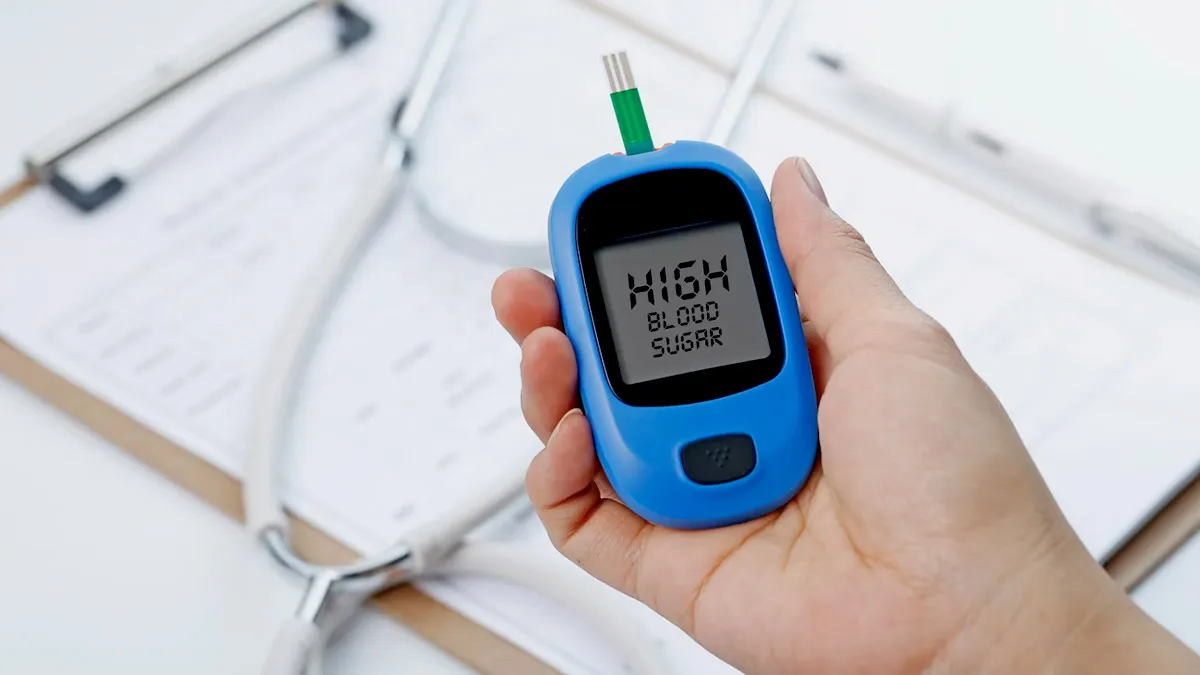
For the millions of people who have diabetes, the road to health can seem like an unsolvable puzzle. Though medication, exercise, and strategic food intake are all important pieces, one little-used solution can greatly simplify the picture. We are talking about the benefits of portion control. Anything but a restrictive diet, portion management is a potent technique that gives people the power to manage blood sugar, keep weight in check, and ultimately, live a more engaged life with diabetes.
Table of Content:-
In an exclusive interaction with the editorial team of Onlymyhealth, we asked our expert, Pooja Singh, Dietician at ShardaCare, Health City - Nodia, to explain how portion control helps in diabetes. Here is what she shared with us.
What Is The Link Between Diabetes And Portion Control?
Diabetes, especially Type 2, is marked by the inability of the body to efficiently utilise insulin or make sufficient quantities of it, resulting in high levels of blood sugar. What and how much we eat directly affects these levels. Here's why portion control is important:
1. Control of Blood Sugar Peaks
All foods, particularly carbohydrates, impact blood glucose. Large portions, even of nutrient-dense foods, can result in a huge increase in glucose delivery to the bloodstream, initiating a sharp spike in blood sugar. Portion control moderates the intake, resulting in more even and controllable blood sugar responses. This avoids the "rollercoaster" pattern of peaks and troughs that, over time, can harm blood vessels and organs.

Also Read: 5-Year-Old Girl Dies After Meningitis Was Mistaken For Tonsillitis: Expert Shares Key Differences
2. Weight Management
A substantial percentage of persons with Type 2 diabetes are obese or overweight. The extra weight helps cause insulin resistance, making it that much more difficult to control blood sugar. Portion control is the key to establishing a calorie deficit required for losing weight or to maintain a healthy weight. Controlling portions means we automatically lower calorie intake without feeling deprived.
3. Optimising Nutrient Consumption
When you're aware of portion sizes, you tend to be more intentional with the quality food that you select. Rather than reaching for buckets of less healthy foods without thinking, portion control gets you to load your plate with nutrient-rich foods such as lean proteins, non-starchy vegetables, and whole grains so that you're consuming the vitamins and minerals your body requires without excessive calorie or carbohydrate intake.
4. Avoiding ‘Hidden’ Carbs and Calories
It is simple to overlook the carbohydrate and caloric value of ostensibly harmless items. A serving of nuts can quickly become several, or a rich pour of salad dressing can supply hundreds of calories. Portion control reminds you of these "hidden" contributions so that you can track them accurately and make better estimates of your blood sugar.
Tips For Mastering Portion Control
So, how do you make portion control work in your daily life? Expert Pooja pointed out that it's simpler than you might imagine with some practical techniques:
1. The Plate Method
This is one of the simplest and most useful aids. Picture your plate split up:
- Half: Non-starchy vegetables (broccoli, spinach, bell peppers, green beans) – these are low in calories and carbs and high in nutrients.
- One-quarter: Lean protein (chicken breast, fish, tofu, beans) – aids in satiety and has little effect on blood sugar.
- One-quarter: Whole grains or starchy vegetables (brown rice, quinoa, sweet potato, whole-wheat pasta) – select these in portion-controlled amounts for enduring energy.
Also Read: What Pregnant Women Should and Shouldn't Eat in Monsoon, Expert Shares

2. Learn Serving Sizes
Read labels and learn what a single serving is. This is usually an eye-opener! Measure things out for a bit using cups and spoons until you have a good mental image of what a serving is.
3. Mindful Eating
Eat slowly and appreciate your food. Listen to your body's hunger and fullness signals. Are you hungry, or are you eating because you're bored or in the habit of eating? Eating slowly gives your brain time to know when you're full so that you don't overeat.
4. Pre-Portion Snacks
Instead of eating directly from a large bag or container, portion out snacks into individual bags or small bowls. This prevents mindless overconsumption.
5. Hydrate Smart
At times, thirst masquerades as hunger. Have a glass of water before eating to feel more satisfied and perhaps consume less.
6. Cook at Home More Often
Preparing your own meals allows you full control over ingredients and portions, making it simpler to follow your diabetes treatment plan.
Bottomline
Portion control isn't deprivation; rather, it's empowerment. It's learning more about what your body needs and how food affects your health. When you manage your portions intentionally, you're not only managing blood sugar; you're cultivating a healthier relationship with food, creating habits that last, and taking an active, educated role in your diabetes management.
Adopt portion control as your new best friend in health. With regular practice, you'll see that taking control of your plate is not merely a means to diabetes management; it's a key to a healthier, more rewarding existence.
Also watch this video
How we keep this article up to date:
We work with experts and keep a close eye on the latest in health and wellness. Whenever there is a new research or helpful information, we update our articles with accurate and useful advice.
Current Version